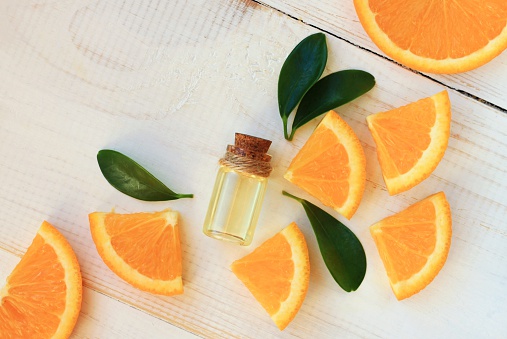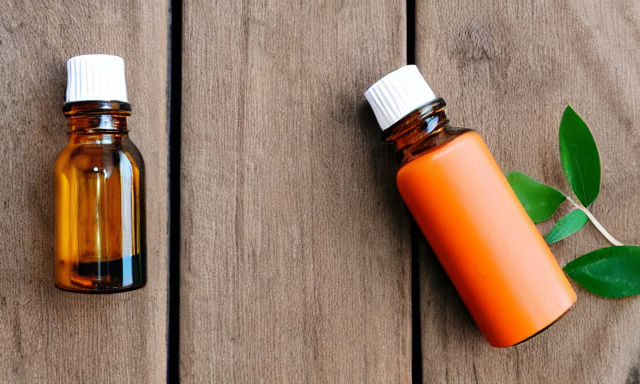What Does Orange Essential Oil Blend Well With?
When it comes to blending essential oils, you have a variety of options. Some essential oils work well together, while others are better suited for specific combinations. Orange and Geranium are excellent choices for aromatherapy blends. They complement each other and enhance the overall experience of relaxation and calm.
Coriander
Coriander essential oil is an excellent blend to use in your skin care products. It has powerful antispasmodic, antimicrobial, and anti-inflammatory properties. It can also help with digestive problems, stress, and muscle spasms. This oil blends well with other essential oils to enhance their effects.
Coriander is an herb native to Morocco that has sparse, feathery leaves and pink/white flowers. The seeds of the plant are edible and have a pungent, squashed bug smell when unripe. It has been used as a spice and flavoring for wine since the ancient Greeks. The seeds were even found in the tomb of Tutankhamen.
Coriander oil is also effective in treating gastrointestinal problems, such as dyspepsia and flatulence. It also improves your appetite and regulates endocrine secretions. It fights depression and helps lift your mood. In addition, it has anti-inflammatory and anti-spasmodic properties and helps with the symptoms of migraine.
Coriander is also a very popular herb in the culinary world. It is often used to soothe stomach aches, relieve the symptoms of certain illnesses, and to add flavor to food. If you enjoy curry or guacamole, you probably already know how coriander can spice up your recipes. Its potent essential oil is so powerful that just a few drops will do wonders for your food.
Orange and coriander essential oils share several beneficial effects. The first is their antimicrobial properties. Both oils contain high amounts of linalool, a monoterpene alcohol. Linalool can help fight dangerous bacteria and yeasts in food. The second is that both oils are very calming for your skin and body.
Lavender
Orange essential oil blends well with lavender for a soothing, calming scent. It is known for its uplifting properties and can be diffused to make the room smell pleasant. Orange oil is also effective for relieving stress and promoting good sleep. You can also diffuse orange oil in the shower and breathe the steam while you shower. Patchouli is another essential oil that blends well with lavender. However, you should be cautious when mixing these two essential oils.
Lavender essential oil blends well with many other essential oils. It is known as the mother of essential oils because of its amazing benefits. The scent of lavender is soothing and calming to the mind. The scent also works well as a skin moisturizer and can be applied to the skin for a relaxing massage.
Another oil blend that blends well with lavender is orange. This oil is cheering to the spirit and is soothing and familiar. It is considered a safe oil for children, pregnant women, and people with health conditions. Moreover, lavender is very soothing and helps relieve stress. It is also used in aromatherapy and helps people with depression.
Orange essential oil is an excellent companion for lavender because it has antibacterial and detoxifying properties. Both essential oils can be blended in a diffuser before bedtime. A combination of orange and lavender oil is great for relieving tension and improving the quality of sleep.
Myrrh
Myrrh is a natural aromatic resin derived from the Commiphora myrrha tree, a small, thorny tree that is closely related to Frankincense. It is native to Egypt and the Middle East, but is commonly used throughout the world. Myrrh’s name derives from the Arabic word “murr,” which means bitter. It was a prized commodity along ancient spice routes. As a result, many myths and legends have sprung up relating to Myrrh’s origins.
Myrrh’s aroma is distinctive. It is at first earthy and resinous, but soon becomes oaky and woody, as well as sweet and bitter. It blends well with Frankincense oil and Elemi oil, as both bring out the woody, sweet aspect of Myrrh. During the holidays, Myrrh is commonly used to create a relaxing and uplifting atmosphere.
Myrrh Essential Oil is a powerful antiseptic and can relieve respiratory discomfort. It also promotes a sense of groundedness and encourages spiritual awakening. Inhaling the steam from the blend helps to loosen congestion, open the respiratory tract, and relieve sinus pressure and blocked sinuses.
Myrrh oil has many health benefits, but you should be careful to not use it if you have certain medical conditions. Myrrh oil may lower blood sugar and affect heart rhythm. Therefore, it is not recommended for people with blood sugar or diabetes. Furthermore, myrrh oil should be kept out of reach of children.
Neem
Orange essential oil blends well with Neemm and is recommended for boosting pest control efforts. This plant’s powerful antiseptic and insecticidal properties can protect your plants from a wide variety of pests. Its sweet, fresh scent will also attract pollinators. In the garden, neem is the holy grail of essential oils. It repels over 200 types of garden pests, including aphids, snails, and moths. It is also an effective anti-fungal and is not toxic to wildlife. A monthly application of neem oil on your garden can help provide healthy, strong seedlings.
Neem oil has an odor that may put people off at first. Because of its strong smell, it is commonly combined with more pleasant essential oils in beauty products. This oil is packed with many beneficial components, and can benefit a wide variety of skin conditions. It is rich in essential fatty acids, including linoleic, oleic, palmitic, and stearic acids.
Neem and Orange essential oils can be blended to produce a unique blend. However, it is important to make sure you research and use high quality oils. The NDA website also provides information about the various types of essential oils and what diluting agents work well with them.
To mask the neem oil scent, you can use orange essential oil, peppermint essential oil, lavender essential oil, or tea tree oil. All of these oils are known for their medicinal properties and can help you combat tough skin problems. In addition to these essential oils, you can also use rose hip seed oil for moisturizing and nourishing your skin. Neem oil soaps can sometimes leave your skin feeling dry, so you should use a moisturizer or toner after using an oil-based facial cleanser.
Sandalwood
Sandalwood is a woody, aromatic essential oil that is used in many aromatherapy products. It is known to soothe nervous tension and irritability. It is a calming scent and is often used in meditation. It can also be used to promote sleep, ease breathing, and reduce stress. Sandalwood is also considered an aphrodisiac.
Orange and sandalwood essential oil blends well together to purify the air and lift the mood. Both oils have anti-bacterial and anti-fungal properties. Orange and Sandalwood are effective at clearing toxins from the body and purifying the air. Sandalwood and Orange essential oils are often found in a variety of aromatherapy blends, including Quintis Aromatherapy Essential Oil Blends.
Sandalwood essential oil is commonly used for meditation, as its aroma is soothing and calming. It can also promote a relaxing bath. Sandalwood essential oil blends well with a wide range of other essential oils, and works well with citrus and floral scents. It also pairs well with Frankincense, Bergamot, and Geranium.
Sandalwood essential oil is expensive, but substitutes are available. You can use cedarwood, vetiver, or patchouli instead. These oils share many of the same chemical properties as sandalwood, and will also create a pleasant aroma.
Frankincense
The aromas of Frankincense essential oil are soothing and invigorating. This aromatic oil has anti-inflammatory properties, making it a valuable addition to topical applications. It is also antimicrobial, boosting the immune system. Additionally, it encourages skin cell regeneration and reduces the appearance of wrinkles and scars.
Frankincense is known to improve mood, combat stress, strengthen intuition, and ground the spirit. It is an effective anti-inflammatory and reliever of muscle pain. It is also effective for stimulating cellular regeneration and relieving itchiness associated with dry skin. In addition, frankincense is excellent for calming down the emotions and enhancing a yoga practice.
Frankincense is known as the king of essential oils. Its diverse uses make it one of the most versatile oils available. In addition to being powerful and aromatic, this essential oil promotes cellular health, boosts immunity, and has a healing effect on the nervous system. When applied topically to the skin, frankincense promotes feelings of relaxation and a balanced mood.
Frankincense essential oil has a light, woodsy aroma. Its antibacterial and anti-inflammatory properties make it an excellent essential oil for facial treatments. In addition, it reduces the appearance of scars and wrinkles. It is also a popular addition to moisturizers and face wash.



